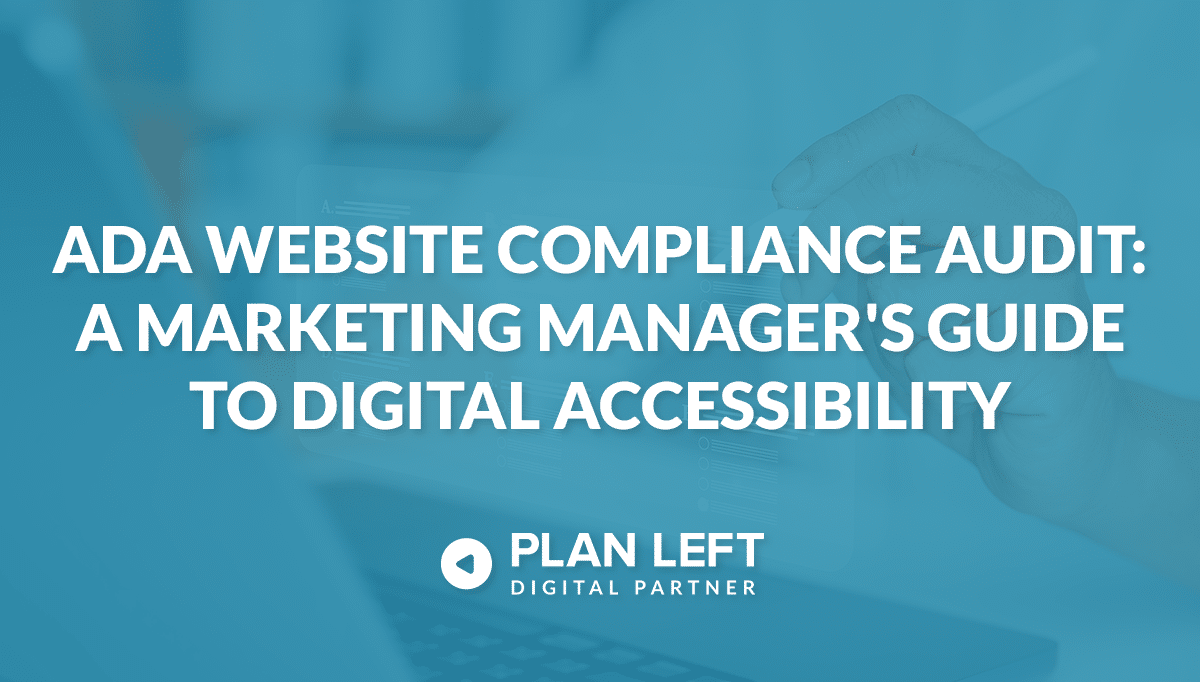
ADA compliance doesn’t happen by chance—it requires a well-thought-out strategy that aligns with your business goals and resources. Here’s how to build an effective ADA compliance audit strategy from risk assessment through resource allocation.
Assess Your Current Compliance Position
Before starting to mitigate, you’ll want to understand where you’re off track with your ADA compliance.
- Conducting a Risk Assessment
- Evaluate the potential risks of non-compliance, including legal repercussions and damage to your brand reputation. Identify areas where accessibility gaps could have the greatest impact on users.
- Identifying Compliance Gaps
- Review existing audits or conduct a preliminary assessment using tools like Lighthouse or WAVE. Focus on critical areas such as navigation, forms, and multimedia content.
- Evaluating Current Resources
- Take stock of your team’s skills, tools, and budget. Understanding what resources are available will help shape your strategy moving forward.
Developing Your Strategic Framework
With a clear picture of your current position, it’s time to outline your goals and plan the path forward.
Setting Compliance Objectives
Define specific, measurable goals such as achieving WCAG 2.1 AA compliance within six months or reducing accessibility errors by 50%.
Defining Success Metrics
Establish KPIs (Key Performance Indicators) like improved user satisfaction scores or increased website traffic from assistive technology users. Identify which metrics you can associate with each point of ADA compliance to establish when and how you’ll reach full website compliance.
Creating Timeline Roadmaps
After you’ve completed an initial ADA audit of your website, you’ll know what changes you’ll need to make. Break down those tasks into manageable phases with clear deadlines. Prioritize high-impact areas first while planning for long-term improvements.
Resource Planning and Allocation
Effective resource management is key to executing your strategy successfully.
- Budgeting for Compliance
- Allocate funds for tools, training, and external consultants if needed. Consider the cost of non-compliance when justifying budgets to stakeholders.
- Building Your Compliance Team
- Identify roles within your organization that can support accessibility efforts, such as developers, designers, and content creators. Provide training where necessary to build internal expertise.
- Selecting Technology Solutions
- Invest in tools that streamline accessibility testing and remediation efforts. Popular options include Axe for developers and JAWS for screen reader testing.
ROI and Business Impact
ADA compliance isn’t just about avoiding lawsuits—it can drive tangible business benefits too.
Measuring Compliance Benefits
Track metrics like increased customer retention rates or improved SEO rankings resulting from accessible design changes. One site found that boosting customer retention rates by just 5% has been found to increase profits by between 25% and 95%
Calculating Cost Avoidance
Estimate the potential savings from avoiding legal fees or settlements due to non-compliance lawsuits. According to Recite.me, typical ADA website lawsuit settlements range from $5,000 to $15,000 when resolved outside of court.
Identifying Business Opportunities
Accessible websites can tap into new markets by serving users with disabilities effectively—an audience often overlooked by competitors. According to McKinsey, 61% of web users with a disability are unlikely to return to a site on mobile if they have trouble browsing it, and 79% visit a competitor’s site instead.
Implementation and Management
Finally, put your strategy into action while ensuring flexibility for adjustments along the way.
Rolling Out Your Strategy
Begin with pilot projects before scaling up efforts across your entire website or digital ecosystem. Monitor progress closely during initial phases.
Managing Stakeholder Expectations
Communicate regularly with stakeholders about progress toward goals using clear metrics and milestones. Transparency builds trust in your process.
Monitoring and Adjusting Plans
Accessibility needs evolve over time—stay agile by revisiting your strategy periodically based on user feedback or regulatory updates.
Conclusion
Building an ADA compliance audit strategy ensures that accessibility becomes an integral part of your business operations rather than an afterthought. By taking a strategic approach, you can achieve sustainable compliance while reaping long-term benefits for both users and your organization.
Explore Latest Posts
Breaking Free from Marketing Silos: Why Community Matters for Business Growth Every entrepreneur knows the weight of making decisions alone. ... read more
December 11, 2025
A Step-By-Step Approach to Breaking Free from Generic Marketing Enterprise marketing leaders face the challenge of standing out among countless ... read more
December 9, 2025
The constant tug-of-war between strategic vision and operational demands defines the modern CEO experience. While your company's future depends on ... read more
December 4, 2025
Essential Strategies for Entrepreneurs
Get Actionable Business Insights & Marketing Tips
Our newsletter delivers real-world strategies from entrepreneurs who’ve been exactly where you are.
Sign up now for:
- Actionable growth strategies that work
- Insider tactics for attracting top talent
- Real-world case studies from successful founders
- Emerging tech trends that drive innovation
- Pragmatic marketing approaches for visionary leaders




